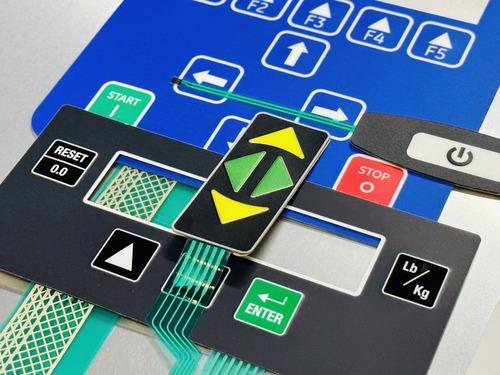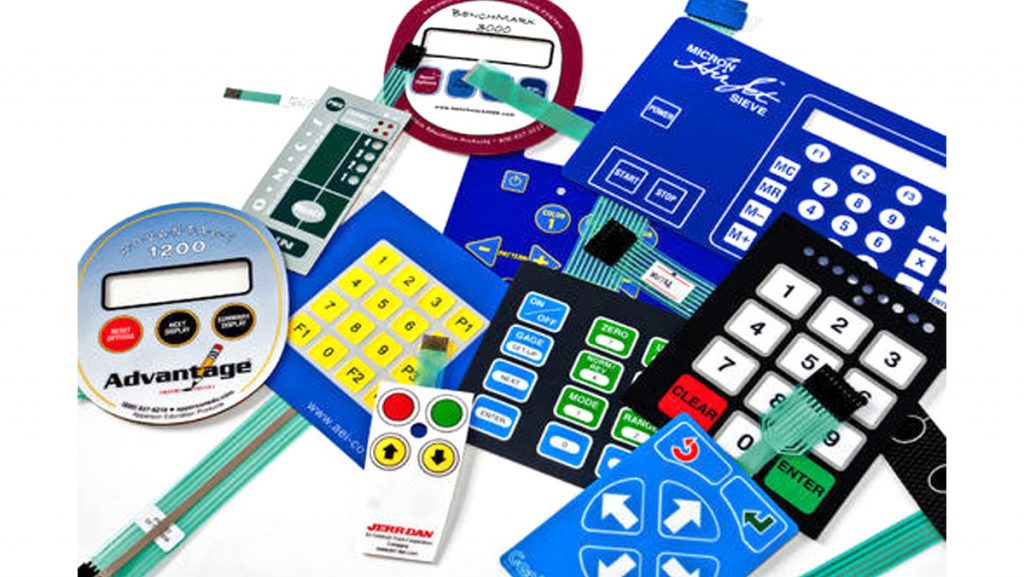A Comprehensive Guide to Membrane Switches for Product Designers
Discover Just How Membrane Switches Function and Their Duty in Modern Electronic Devices
Membrane Switches represent an innovative integration of modern technology and design within the realm of modern-day electronics, serving as essential user interfaces in countless gadgets. Recognizing the intricacies of Membrane button capability and their broader effects in boosting user experience invites more expedition into their style, benefits, and the cutting-edge developments shaping their future in innovation.
What Are Membrane Buttons?

Membrane buttons are distinguished by their resilience and resistance to ecological factors, such as dirt, moisture, and severe temperature levels. They can be customized with various graphics, colors, and tactile responses options, enhancing user experience while maintaining aesthetic appeal - membrane switches. Additionally, the consolidation of printed circuits enables for seamless integration right into devices, enhancing general capability.
The convenience of Membrane switches is obvious in their ability to sustain both intricate and basic control features. They can include features such as LED indicators and touch-sensitive modern technology, dealing with particular individual requirements. As technology proceeds to advance, Membrane Switches remain essential for enabling efficient and instinctive customer interfaces, thus playing a pivotal duty in the improvement of modern digital devices.
Elements of Membrane Buttons
Membrane buttons are composed of numerous essential parts that collaborate to produce a functional and trusted user interface. The primary aspects consist of the graphic overlay, glue layer, spacer layer, and conductive traces.
The graphic overlay works as the interface, commonly printed on a versatile substrate such as polyester or polycarbonate. This layer not only offers visual allure however also consists of responsive feedback, aesthetic cues, and protective features. Beneath the visuals overlay lies the adhesive layer, which protects the button to the gadget and ensures durability against environmental tensions.
The spacer layer is important for preserving the required void between the graphic overlay and the circuit layer. This gap enables the activation of the button when stress is applied. The conductive traces, normally made from silver or carbon, form the electric pathways that finish the circuit when the switch is involved.
In addition, a backing layer may be included for architectural support and insulation. These parts collaborate flawlessly, guaranteeing that Membrane buttons are both resistant and easy to use, making them crucial in different contemporary electronic applications.
How Membrane Switches Work
Just how do Membrane Switches feature successfully within digital tools? Membrane Switches operate the principles of pressure-sensitive modern technology, making use of a split construction that includes visuals overlays, glue layers, and conductive elements. When a customer uses pressure to the switch, the leading layer warps, enabling the conductive elements below to make call and finish an electrical circuit. This activity causes the wanted feature within the tool.
The layout of Membrane switches is critical for their effective operation (membrane switches). The layers are meticulously engineered to offer tactile comments, durability, and resistance to ecological elements such as dampness and dust. The incorporation of domes-- small, raised areas within the button-- improves tactile feedback, giving users with a noticeable click experience upon activation
In addition, Membrane switches can be tailored in regards to size, shape, and graphics, making them suitable for different applications. They are typically utilized in control panels, medical tools, and consumer electronic devices as a result of their smooth style and integrity. Generally, the reliable functioning of Membrane switches is critical in improving individual interaction and making sure smooth operation in modern-day digital gadgets.

Applications in Modern Tools
Using their one-of-a-kind layout and functionality, Membrane buttons have come to be indispensable parts in a large range of contemporary digital devices. These versatile interfaces are employed in consumer electronic devices, industrial equipment, clinical tools, and automobile controls, supplying smooth customer interaction.
In consumer electronics, Membrane switches are typically found in home appliances like microwaves, cleaning machines, and other house gadgets, where they make it possible for intuitive control with a smooth profile. Their inconspicuous style promotes assimilation into compact like it devices, improving visual allure without endangering functionality.
In industrial applications, Membrane Switches act as control panels for equipment, using toughness and resistance to rough environments. web Their capability to stand up to wetness and impurities makes them ideal for use in production and handling sectors.
Clinical tools likewise take advantage of Membrane switches, which are designed to be easy to clean and keep, guaranteeing health in scientific settings. They are commonly made use of in diagnostic equipment, individual tracking systems, and mobile medical tools, where integrity is extremely important.
Advantages of Membrane Buttons
Among the essential advantages of Membrane switches is their flexibility, which enables them to be customized for a variety of applications across several industries. These buttons can be developed in numerous sizes and shapes, accommodating one-of-a-kind product requirements while providing seamless combination right into gadgets. Their slim account allows a smooth and small design, usually boosting the visual allure of digital products.
An additional substantial benefit is their durability - membrane switches. Membrane buttons are typically immune to dust, moisture, and chemicals, making them perfect for extreme environments. This durability expands their life-span compared to typical mechanical switches, lowering the need for regular replacements
In addition, Membrane Switches offer cost-effectiveness. The production procedure involves printing modern technologies that lessen manufacturing prices, especially for large runs. This price, integrated with low maintenance requirements, makes them an eye-catching option for producers.

Final Thought
Finally, Membrane Switches stand for a significant advancement in interface innovation within contemporary electronics. Their layered construction, pressure-sensitive operation, and versatility to numerous applications highlight their relevance throughout multiple industries. The sturdiness and environmental resistance of Membrane Switches even more improve their appeal, making them a favored option for manufacturers seeking reputable and personalized solutions. As the need for instinctive and resilient interfaces remains to expand, the function of Membrane switches in shaping user experience will unquestionably increase.
Membrane Switches represent an innovative assimilation of innovation and design within the world of modern electronics, offering as crucial user interfaces in countless devices.In the realm of modern-day electronics, Membrane Switches offer as crucial elements that help with individual interaction with tools. As modern technology continues to develop, Membrane Switches remain vital for enabling reliable and user-friendly individual interfaces, consequently playing an essential function in the development of modern electronic tools.
Exactly how do Membrane Switches function effectively within digital tools? On the whole, the efficient functioning of visit this site right here Membrane switches is pivotal in improving user communication and making sure smooth procedure in contemporary electronic devices.